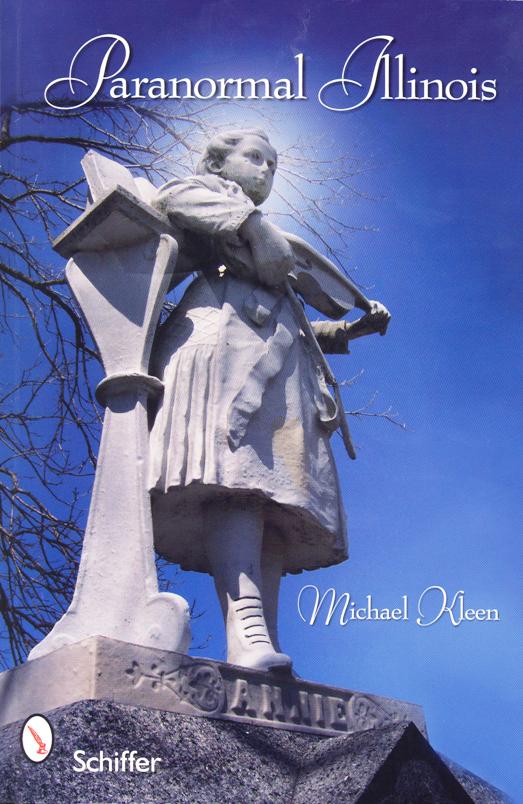



The headless horseman of Lakey’s Creek is quite possibly one of the oldest ghost stories in Illinois. Passed down as an oral tradition until John W. Allen put the story on paper in 1963, the mysterious man named Lakey, as well as his untimely end, has been immortalized in the folklore of Southern Illinois. Like Lake Michigan’s “Seaweed Charlie,” this ghost story may be preserving the memory of an unsettling event in local history.
Long before a concrete bridge spanned the shallow creek 1.5 miles east of McLeansboro, a frontiersman named Lakey attempted to erect his log cabin near a ford along the wagon trail to Mt. Vernon. One morning, a lone traveler stumbled upon Lakey’s body. Lakey’s head had been severed by his own ax, which was left at the scene. According to legend, his murderer was never found.
For decades after the murder, travelers reported being chased by a headless horseman who rode out of the woods along Lakey’s Creek. “Always the rider, on a large black horse, joined travelers approaching the stream from the east, and always on the downstream side,” John Allen wrote. “Each time and just before reaching the center of the creek, the mistlike figure would turn downstream and disappear.”
In the October 1973 issue of Goshen Trails, Ralph S. Harrelson published research in which he claimed to have learned the historical personage behind the Lakey legend. In a history of Hamilton County, he discovered a single sentence revealing that a man named Lakey―the same man who gave his name to the creek―had indeed lived near the ford, but more tellingly, that he had been murdered by his son-in-law.
After further research, Harrelson discovered that a man named Joel Leaky had owned a tract of land in that vicinity prior to 1824. “Leaky,” apparently, was a variation in the spelling of “Lakey.” “Joel could be, and probably is, the person for whom the creek is named,” he concluded.
The tale of the headless horseman of southern Illinois has graced the pages of many monographs on Illinois ghost lore since its first printing in 1963. Among others, Lakey’s ghost has appeared in Beth Scott and Michael Norman’s Haunted Heartland (1985), Jo-Anne Christensen’s Ghost Stories of Illinois (2000), and Chad Lewis and Terry Fisk’s Illinois Road Guide to Haunted Locations (2007).
Only Chad Lewis and Terry Fisk’s work contains a contemporary encounter with the phantom. A local woman, who was familiar with the Lakey legend, told them about the incident. The woman passed over the bridge every day on her way to and from work. One evening, she saw something strange in the woods. “As the woman slowed down to get a better look at what she had seen, she almost crashed her car because of what was staring back at her,” Lewis and Fisk related. “Perched on top of a large horse was a man with no head.”
We will never know if Washington Irving’s famous tale of “The Legend of Sleepy Hollow” affected the legend of Lakey’s Creek. It is possible that German settlers carried the tale from New England to southern Illinois. Stories involving ghostly chases, such as Gottfried Bürger’s “The Wild Huntsman,” were widely popular in the early 1800s. Then again, Lakey’s black steed could have been sired right here in Illinois.
Further Reading
- John W. Allen, Legends & Lore of Southern Illinois (Carbondale: Southern Illinois University, 1963, 1973).
- Ralph S. Harrelson, “History and Legend of Lakey,” Goshen Trails (October 1973): 13.
- Jo-Anne Christensen, Ghost Stories of Illinois (Edmonton: Lone Pine, 2000).
- Chad Lewis and Terry Fisk, The Illinois Road Guide to Haunted Locations (Eau Claire: Unexplained Research Publishing Company, 2007).


3 replies on “The Legend of Lakey’s Creek”
[…] who snatched up a tract of land and built a cabin near a logging road. One day, a traveler came upon Lakey’s body, his head lopped off by his own ax. Authorities later discovered his own son-in-law committed the […]
LikeLike
I think legends help people remember events tied to certain locations. Even if they forget the original event, the legend remains
LikeLiked by 1 person
Isn’t it fascinating to try to tease out which ghost story came first? Lakey’s sad demise seems pretty well-documented, though — so maybe there is something to it (the story, if not the ghost). Thank you for yet another delightfully chilling read!
LikeLike